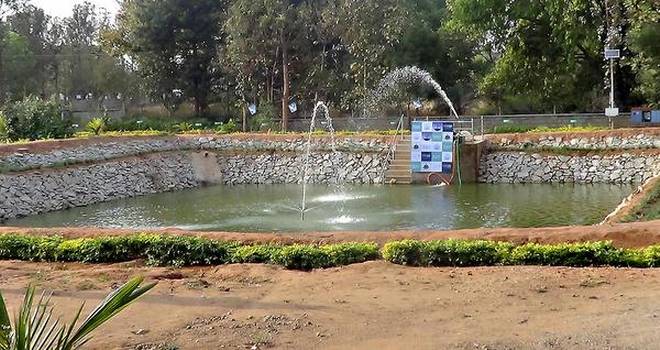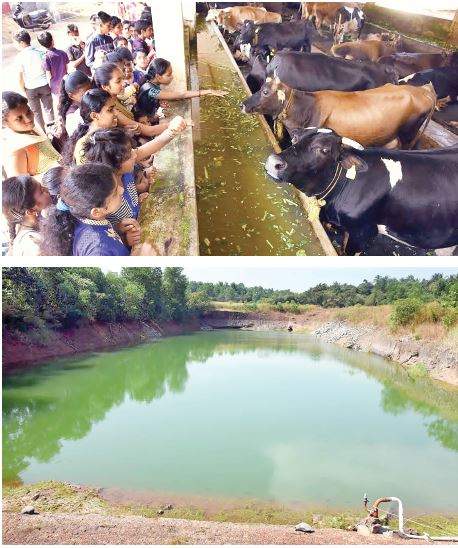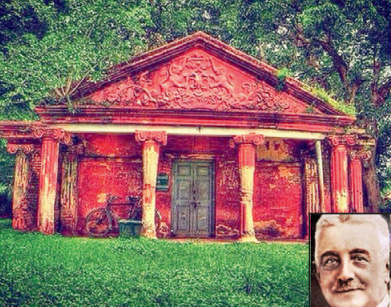
Members of the Soliga tribal community on M.M. Hills use the plant to earn a livelihood by making furniture from them
Behind the innocuous, little, bright flowers that pepper much of the country’s landscape, lies a sinister tale that threatens to tip the fragile balance of the eco-sensitive forests.
The near-omnipresent Lantana Camara, originally from South America but introduced in the country during the British Raj, has invaded much of the country’s habitats. The “lantana problem” has forest officials stretched to contain the “invasion” that is blamed for increasing forest fires and choking out native grass and tree species which provide fodder for herbivores.
For the unassuming Mahadeva, 34, however, the “toxic” weed is now a resource to fuel his livelihood. For seven days in a month, he and around 16 others from the Soliga tribal community set off into the forests of M.M. Hills Wildlife Sanctuary in south Karnataka in search of lantana. The plant is uprooted, and the sticks collected in neat bundles weighing more than 30 kg each. The bundles are then boiled and the bark peeled off. In the next few weeks, the sticks are fashioned, bent, nailed, tied and glued on to form furniture — stools, sofas, beds, bookshelves and more — before the process is repeated.
“It not only resembles cane furniture, but matches it in durability and quality,” Mr. Mahadeva says.
His tryst with lantana started a decade ago when the concept of lantana furniture first entered the undulating forests of M.M. Hills — a key part of the contiguous forests that now host among the densest tiger populations in the world. Envisioned by researchers at Asoka Trust for Research into Ecology and the Environment (ATREE), Bengaluru, over 50 villagers were trained since 2004 to use lantana and develop market linkages for the furniture.
“At the time we started, the tribal community had lost their livelihood as the Forest Department had prohibited the extraction of bamboo. We taught them how to use lantana instead and helped form a society to market the products. Now, nearly 80% of their livelihood comes out of lantana itself,” says Harisha R.P. from ATREE who is coordinating the project.
For 30-year-old Madu, who has been working with lantana for over a decade, furniture-making has seen him settle down in his village rather than move around in an uncertain search for daily wage labour. “As demand rises, fewer people are going out to find work. Before, we would be affected when drought hits the farmlands. Now, we have work throughout the year,” he says.
The centres are set to expand, as workers are now struggling to complete an order to make 50 large elephant statues with lantana. “We are guaranteed ₹500 per day, and are even taking labourers for ₹300 a day. This sort of earning is unheard of in our tribal village,” says Narayana, who has taken charge of processing orders.
Though away from retailers for now, the demand — placed through direct orders only — is soaring, and production is only constricted by the logistics of transporting furniture from forests. At the three centres in M.M. Hills, over 50 types of products are made that eventually make their way to offices and resorts in urban centres.
Controlling lantana
While there have been no scientific studies on the ecological benefit of this work, anecdotal evidence suggests that lantana spread may have been contained locally.
There are now three centres at M.M. Hills itself, and Mr. Harisha estimates that more than three tonnes of lantana is extracted yearly. “Once uprooted, it takes lantana at least three years to come again. This window may give a chance for native species to thrive again,” he says.
In many patches of M.M. Hills, this “window” is evident. Ravi, a worker at Anehola centre, says during the early years, lantana could be extracted almost at their doorstep. “Now, we have to go 3 km into the forests to find usable lantana,” he says.
The expensive alternative would be to mechanically uproot the plant, which has become a threat second only to poachers in deciduous forests.
During the summer, the weed becomes brittle, turning forests into tinderboxes where fires spread with alarming rapidity. The fast-growing, near-drought-resistant lantana dominates the landscape, gradually outcompeting native plants that are crucial cogs in the forest biodiversity. To top off the seeming villainy of the plant, lantana is toxic to grazers and is actively avoided by elephants. The Forest Department states that in Bandipur Tiger Reserve — which is home to over 100 tigers and thousands of elephants, sambars, gaurs and deer — lantana is found in 80% of its nearly 874-sq.km. expanse. The cost of uprooting lantana in just 5 sq.km. has been estimated to be ₹1.8 crore — or, if one were to extrapolate for the entire reserve, more than ₹250 crore for what is still a temporary solution. It is easy to understand why ATREE pushes for this low-cost innovation that deals with two socio-ecological problems in forests: livelihood and containing lantana. So, why not profit through this proliferation?
Spreading the innovation
The success of the M.M. Hills experiment has seen the concept spread among other tribal hamlets. Over the years, ATREE as well as Soliga tribals are called to forests of south India to train others in making furniture. In 2009, The Shola Trust helped set up two lantana furniture centres in Mudumalai Forests — where lantana is found in more than 200 sq.km of forests. Lantana furniture is being made in the forests on the foothills of the Himalayas in Uttarakhand; while, a little more than a year ago, 70 persons from four tribal hamlets in forests of Siruvani Hills near Coimbatore were trained by Amrita University.
“This is just in the training phase now, but there has been considerable success. Just through exhibitions, we have sold ₹1.7 lakh worth of furniture already. We just can’t keep up with the demand,” said Maya Mahajan, Associate Professor, Centre for Sustainable Future at Amrita University. The university plans to expand this to other hamlets in the region, hoping to capitalise on the increasing demand from tourists.
source: http://www.thehindu.com / The Hindu / Home> News> States> Karnataka / by Mohit M Rao / M.M Hills (South Karnataka) – April 29th, 2017










